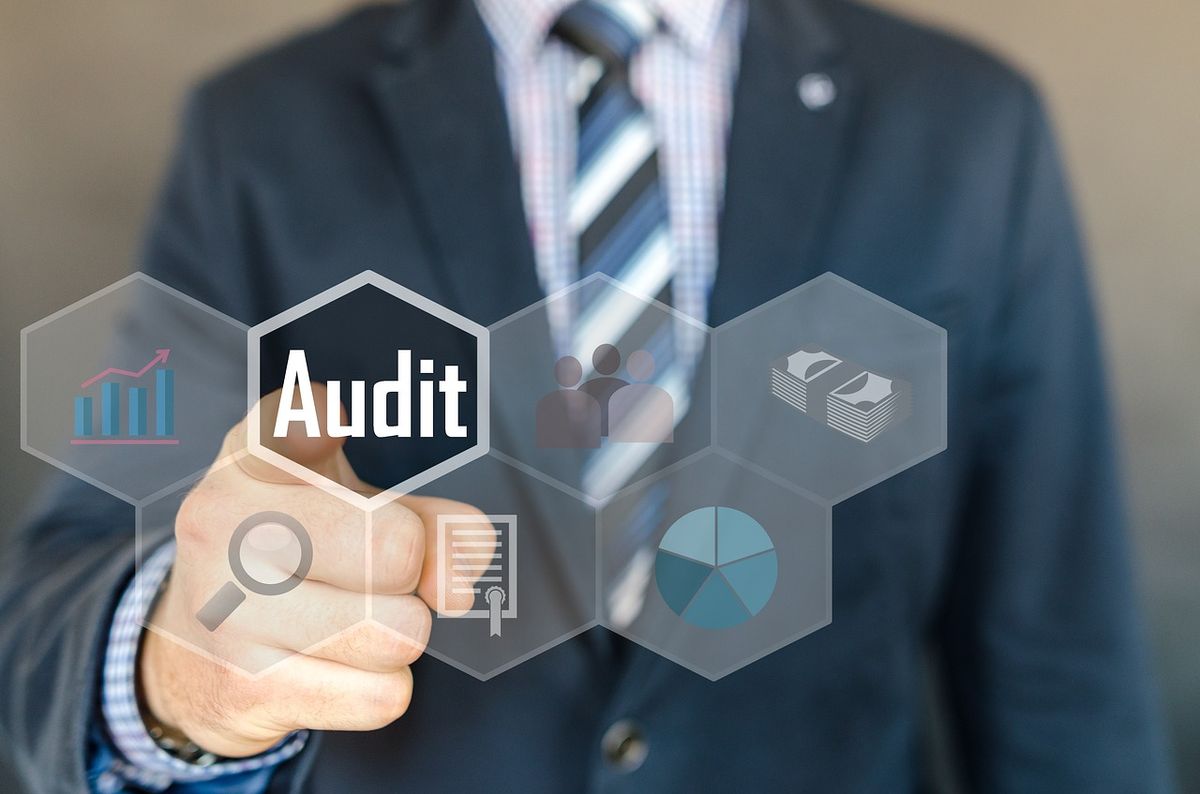In the competitive landscape of manufacturing, Chief Financial Officers (CFOs) are often tasked with ensuring the financial health of their organizations, which includes the effective management of debt collection. Understanding the intricacies of debt collection is crucial for manufacturing CFOs as it impacts cash flow and the company’s bottom line. This article provides a comprehensive overview of the debt collection process, offering insights into the phases of recovery, cost-benefit evaluations, strategic decision-making, the role of technology, and the legal and ethical considerations that manufacturing CFOs need to be aware of.
Key Takeaways
- The debt collection process is structured into three phases: initial recovery efforts, legal escalation, and final resolution options, with specific actions taken at each stage to maximize recovery chances.
- Manufacturing CFOs must evaluate the cost-benefit of debt collection by considering collection rates, the impact of debt age on recovery, and the costs associated with potential legal action.
- Strategic decision-making is essential in debt recovery, including determining when to proceed with litigation, handling unrecoverable cases, and deciding between continuous pursuit versus withdrawal of claims.
- Technology plays a pivotal role in enhancing collection efforts through skip-tracing, multichannel communication strategies, and data analytics to improve recovery rates.
- CFOs must ensure compliance with debt collection laws and maintain ethical practices to protect the company’s reputation during the collection process.
Understanding the Debt Collection Process
Phase One: Initial Recovery Efforts
The clock starts ticking immediately. Within the first 24 hours of initiating Phase One, a multi-pronged approach is launched to recover outstanding funds. Initial contact is key, with a series of four letters dispatched via US Mail as the opening salvo.
- Skip-tracing and investigations kick in to unearth the best financial and contact data on debtors.
- A barrage of communication follows: phone calls, emails, text messages, faxes, and more.
Daily attempts to reach a resolution are standard for the first 30 to 60 days. If these efforts hit a wall, the case escalates to Phase Two, involving legal muscle within the debtor’s jurisdiction.
Persistence is the name of the game, with the goal to secure a resolution before legal escalation becomes necessary. The initial phase is a blend of diplomacy and determination, setting the stage for potential legal proceedings.
Phase Two: Legal Escalation
When initial recovery efforts falter, Phase Two marks a critical shift in the manufacturing debt collection process. Legal escalation is not taken lightly; it signifies that previous attempts to engage the debtor have been exhausted. At this juncture, the case is forwarded to an attorney within the debtor’s jurisdiction.
- The attorney sends a series of demand letters on law firm letterhead.
- Concurrently, attempts to contact the debtor via phone intensify.
- If these efforts remain unfruitful, a detailed report is prepared, outlining potential next steps.
The move to legal escalation is a clear signal to debtors that the creditor is serious about recovery. It’s a strategic push to elicit a response before considering final resolution options.
The decision to escalate legally is pivotal, often involving additional costs and considerations. It’s essential to weigh the potential recovery against these expenses to ensure a judicious approach to debt collection.
Phase Three: Final Resolution Options
At the crossroads of debt recovery, CFOs face a critical decision. Choose wisely between closure and litigation. Closure means no further costs; litigation involves upfront legal fees, typically $600-$700.
Litigation is a gamble on recovering the full debt, including filing costs. If unsuccessful, the case closes with no additional fees owed.
Consider the financial viability of pursuing legal action:
- Thorough investigation of debtor’s assets
- Likelihood of recovery
- Upfront legal costs vs. potential debt recovery
Deciding not to litigate? You can withdraw the claim or continue standard collection efforts without further charges.
Remember, collection rates vary based on the age and amount of the debt, as well as the number of claims. Here’s a quick breakdown:
| Claims Submitted | Accounts < 1 Year | Accounts > 1 Year | Accounts < $1000 | Attorney Placed |
|---|---|---|---|---|
| 1-9 | 30% | 40% | 50% | 50% |
| 10+ | 27% | 35% | 40% | 50% |
The choice is yours, but it must be informed by a strategic assessment of potential outcomes and costs.
Evaluating the Cost-Benefit of Debt Collection
Assessing Collection Rates and Fees
When it comes to debt collection, understanding the fee structure is crucial for manufacturing CFOs. Collection rates can significantly impact the bottom line, with fees varying based on the age and size of the account. It’s essential to weigh the potential recovery against the costs involved.
Manufacturers should be aware of legal considerations, establish clear payment terms, use effective invoicing processes, and negotiate settlements to prevent unpaid debt. Here’s a snapshot of typical collection rates:
| Claims Quantity | Account Age | Collection Rate |
|---|---|---|
| 1-9 | < 1 year | 30% |
| 1-9 | > 1 year | 40% |
| 1-9 | < $1000 | 50% |
| 10+ | < 1 year | 27% |
| 10+ | > 1 year | 35% |
| 10+ | < $1000 | 40% |
Deciding on whether to pursue debt collection internally or outsource to a collection agency involves analyzing these rates alongside the probability of successful recovery.
Analyzing the Impact of Debt Age on Recovery
The age of debt is a critical factor in recovery success. Older debts are harder to collect, with diminishing returns over time. Manufacturing CFOs must understand that the longer a debt remains unpaid, the more challenging and costly it becomes to recover.
Recovery rates drop significantly as debts age, impacting the bottom line. Here’s a snapshot of typical collection rates based on debt age:
| Debt Age | Collection Rate |
|---|---|
| < 1 year | 30% – 27% |
| > 1 year | 40% – 35% |
Timely recovery is crucial for maintaining healthy cash flow. Proactive measures and negotiation techniques can mitigate the risks associated with aging debts.
CFOs should leverage technology and data analytics to enhance recovery processes, ensuring business stability. The right strategy can turn potential losses into recoverable assets, safeguarding manufacturing profits.
Considering Legal Action and Associated Costs
When debt collection strategies for manufacturing CFOs escalate to legal action, the decision must be weighed against potential costs and recovery likelihood. Legal costs can be a significant barrier, with upfront fees for court costs and filing often ranging from $600 to $700. These costs do not guarantee success but are necessary for litigation to proceed.
Deciding to litigate requires a clear-eyed assessment of the debtor’s assets and the strength of your claim. If the case appears weak or the debtor’s assets are insufficient, closure may be the prudent choice.
The table below outlines the varying collection rates based on factors such as account age and whether the account has been placed with an attorney:
| Number of Claims | Account Age | Collection Rate |
|---|---|---|
| 1-9 | Under 1 year | 30% |
| 1-9 | Over 1 year | 40% |
| 1-9 | Under $1000 | 50% |
| 10+ | Under 1 year | 27% |
| 10+ | Over 1 year | 35% |
| Any | With Attorney | 50% |
CFOs must balance the urgency of recovering funds with the reality of escalating unresolved debts and the associated legal costs. The choice to pursue litigation is not just a financial calculation but a strategic one, impacting everything from cash flow to company reputation.
Strategic Decision-Making in Debt Recovery
When to Proceed with Litigation
Deciding to take legal action is a pivotal moment in debt recovery. Weigh the potential gains against the upfront costs and the likelihood of successful collection. Consider litigation if the debtor’s assets are sufficient and the debt age is within a recoverable range.
Assess the debtor’s solvency before proceeding. If assets are likely to cover the debt, litigation may be warranted. However, if recovery seems unlikely, it may be more prudent to close the case or continue with standard collection activities.
Here’s a quick rundown of potential upfront legal costs:
- Court costs and filing fees: $600 – $700 (varies by jurisdiction)
Remember, these are just initial expenses. Total costs can escalate with the complexity of the case. If litigation fails, rest assured, you owe nothing further to our firm or our affiliated attorney.
Litigation is a serious step. Ensure it’s the right one with a thorough evaluation of all factors involved.
For more detailed guidance and specialized recovery services, consider reaching out to DCI, Debt Collectors International, with high success rates.
Navigating the Closure of Unrecoverable Cases
When recovery is deemed unlikely, CFOs face the tough decision of case closure. Accepting the end of the road for certain debts is a strategic move to conserve resources. Closure is recommended when the cost of further pursuit outweighs the potential recovery.
Closure does not equate to failure, but rather a calculated cessation of efforts. Consider the following steps:
- Review the comprehensive investigation of the debtor’s assets.
- Assess the likelihood of successful recovery against the costs involved.
- Decide whether to withdraw the claim or continue with standard collection activity.
In the event of closure, rest assured that no additional fees will be incurred from the firm or affiliated attorneys.
Remember, the goal is to optimize the financial health of your company, not to chase after diminishing returns.
Continuous Pursuit vs. Withdrawal of Claims
Deciding between the relentless pursuit of debtors and the strategic withdrawal of claims is a pivotal moment for Manufacturing CFOs. Weighing the potential for recovery against the costs incurred is essential. When the likelihood of recovery is low, and the debtor’s assets are insufficient, it may be prudent to close the case, avoiding unnecessary expenses.
On the other hand, if the debtor’s assets suggest a reasonable chance of recovery, litigation may be the next step. However, this comes with upfront legal costs, typically ranging from $600 to $700. These costs cover court fees, filing fees, and other related expenses. Should litigation prove unsuccessful, the case is closed with no further obligation.
Costs and recovery rates vary depending on the age and size of the debt, as well as the number of claims. Here’s a quick breakdown:
- Accounts under 1 year: 30% (1-9 claims) or 27% (10+ claims)
- Accounts over 1 year: 40% (1-9 claims) or 35% (10+ claims)
- Accounts under $1000: 50% regardless of claim count
- Accounts placed with an attorney: 50% regardless of claim count
The decision to continue with standard collection activities or to escalate to litigation is a significant one, impacting both financial health and cash flow management.
The Role of Technology in Enhancing Collection Efforts
Leveraging Skip-Tracing and Investigation Tools
In the realm of debt collection, skip-tracing is a pivotal tool for CFOs. It involves tracking down the whereabouts of debtors who seem to have ‘skipped’ out on their financial obligations. By utilizing advanced databases and public records, CFOs can uncover contact information that may not be readily available.
- Initial skip-tracing efforts can reveal valuable debtor insights.
- Investigation tools assist in assessing debtor’s asset ownership.
- Enhanced data leads to more informed collection strategies.
The integration of technology in skip-tracing not only refines the accuracy of locating debtors but also expedites the entire collection process.
Furthermore, the use of investigation tools can provide a comprehensive view of a debtor’s financial status, enabling a more strategic approach to recovery. This is particularly crucial in large claim B2B manufacturing collections, where the stakes are high and the amounts significant. Technology streamlines debt recovery through automated reminders, tracking, data analysis, and efficiency improvement.
Utilizing Multichannel Communication Strategies
In the realm of debt collection, multichannel communication is key to maximizing recovery efforts. By engaging debtors across various platforms, CFOs can increase the likelihood of successful debt recovery. The use of emails, phone calls, text messages, and even faxes ensures that messages reach debtors through their preferred channels, enhancing the chances of a response.
Technology enables efficient debt tracking through automated systems, and collaborating with recovery agencies benefits manufacturing by streamlining invoicing and payment systems, which in turn improves recovery rates. Effective credit control policies are essential to minimize bad debts, and data analytics aids in risk assessment, ensuring a more targeted approach to debt collection.
The strategic integration of multiple communication channels can significantly improve the efficiency and effectiveness of debt recovery efforts.
Here’s a quick glance at the potential impact of multichannel strategies on recovery rates:
- Emails: Direct and cost-effective, can include detailed information and payment links.
- Phone Calls: Personalized approach, allows for immediate negotiation.
- Text Messages: High open rates, convenient for quick reminders.
- Faxes: Useful for formal documentation and legal notices.
By leveraging these channels in a coordinated manner, CFOs can optimize their debt collection process and achieve better outcomes.
Improving Debt Recovery with Data Analytics
Harnessing the power of data analytics is a game-changer in the debt collection landscape. Data-driven strategies enable CFOs to prioritize collection efforts, forecast recovery outcomes, and tailor communication to debtor profiles. By analyzing historical payment patterns and debtor behavior, manufacturing CFOs can identify the most effective recovery tactics.
Automation plays a crucial role in streamlining the collection process. Automated systems can segment debtors based on risk assessment, ensuring that high-priority cases receive immediate attention. This segmentation also allows for more personalized approaches, which can lead to higher recovery rates.
The integration of data analytics and automation not only increases efficiency but also provides actionable insights that can significantly improve debt recovery rates.
Here’s a quick look at how analytics can impact recovery efforts:
- Predictive modeling: Forecasting debtor payment behavior to enhance recovery strategies.
- Risk assessment: Identifying high-risk debtors for prioritized collection action.
- Customized communication: Tailoring outreach methods based on debtor data to increase engagement.
- Performance tracking: Monitoring collection efforts to refine and adapt strategies over time.
Legal and Ethical Considerations in Debt Collection
Compliance with Debt Collection Laws
Navigating the legal landscape of debt collection is a balancing act. Manufacturing CFOs must ensure adherence to the legal framework and regulatory compliance to mitigate risks. Effective communication and thorough documentation are the pillars of lawful debt recovery. Ethical practices not only align with legal standards but also preserve the integrity of the company.
- Understand the Fair Debt Collection Practices Act (FDCPA) and similar state laws.
- Maintain accurate records of all debtor communications and transactions.
- Ensure all collection activities are within legal boundaries to avoid litigation.
The goal is to recover debts while upholding the highest standards of legality and fairness.
Ethical Practices in Engaging Debtors
Maintaining ethical standards in debt collection is not just a legal obligation; it’s a cornerstone of preserving customer relationships. Outsourcing debt collection can have mixed effects on these relationships. It’s essential to ensure that any third-party agencies uphold the same ethical values as your company.
Transparency in communication and clear documentation are vital. Debtors should always be informed about their rights and the steps involved in the recovery process. Here’s a quick checklist for ethical engagement:
- Respect the debtor’s privacy and confidentiality.
- Avoid aggressive or misleading tactics.
- Provide accurate and complete information about the debt.
- Ensure all actions are in compliance with relevant laws.
When considering the closure of unrecoverable cases, it’s important to balance persistence with pragmatism. Continuous pursuit of a debt can sometimes be more costly than the debt itself.
Remember, successful debt recovery strategies often involve a combination of specialized agencies and automated software, but never at the expense of ethical conduct.
Protecting Your Company’s Reputation During Collections
Maintaining a positive public image is crucial during the debt collection process. Reputation is a valuable asset that can be tarnished by aggressive or unethical collection practices. It’s essential to balance firmness with fairness, ensuring that all actions are within legal bounds and reflect positively on your company.
Transparency is key to upholding your company’s integrity. Keep communication clear and professional, and document all interactions with debtors. This not only protects your company legally but also demonstrates a commitment to ethical practices.
- Educate your team on the importance of maintaining a professional demeanor.
- Establish clear guidelines for interactions with debtors.
- Monitor collection activities to ensure they align with company values.
The goal is to recover debts while preserving the trust and respect of your customers and the public.
Remember, the way your company approaches debt recovery can have long-lasting effects on its reputation. Choose strategies that uphold your company’s image and foster long-term relationships with clients.
Navigating the complex world of debt collection requires not only a keen understanding of the law but also a strong ethical framework. At Debt Collectors International, we pride ourselves on our commitment to both legal compliance and ethical practices in every aspect of our work. Our experienced team is well-versed in the intricacies of debt recovery across various industries, ensuring that your collections are handled professionally and with respect for all parties involved. To learn more about how we can assist you with your debt collection needs and to ensure you’re operating within the legal and ethical boundaries, visit our website and explore our comprehensive services.
Frequently Asked Questions
What initial steps are taken during Phase One of the Recovery System?
Within 24 hours of placing an account, the Recovery System initiates with sending the first of four letters to the debtor, skip-tracing and investigating the debtor for financial and contact information, and daily attempts to contact the debtor via various communication methods for the first 30 to 60 days.
What actions are taken when a case escalates to Phase Two?
In Phase Two, the case is forwarded to an affiliated attorney who will send a series of letters on their law firm letterhead and attempt to contact the debtor via telephone. If these attempts fail, a recommendation is made for the next step.
What are the possible recommendations at the end of Phase Three?
The recommendations at the end of Phase Three can either be to close the case if recovery is unlikely, or to proceed with litigation if there is a possibility of recovering the debt.
What are the costs involved if a company decides to proceed with litigation?
If a decision is made to proceed with litigation, the company must pay upfront legal costs such as court costs and filing fees, typically ranging from $600.00 to $700.00, depending on the debtor’s jurisdiction.
How does the age of a debt impact the collection rates charged by DCI?
DCI charges different rates depending on the age of the account: 30% of the amount collected for accounts under 1 year in age, and 40% for accounts over 1 year in age. For smaller claims under $1000.00, the rate is 50%, and accounts placed with an attorney also have a rate of 50%.
What happens if attempts to collect via litigation fail?
If collection attempts via litigation fail, the case will be closed, and the company will owe nothing further to the firm or the affiliated attorney.




